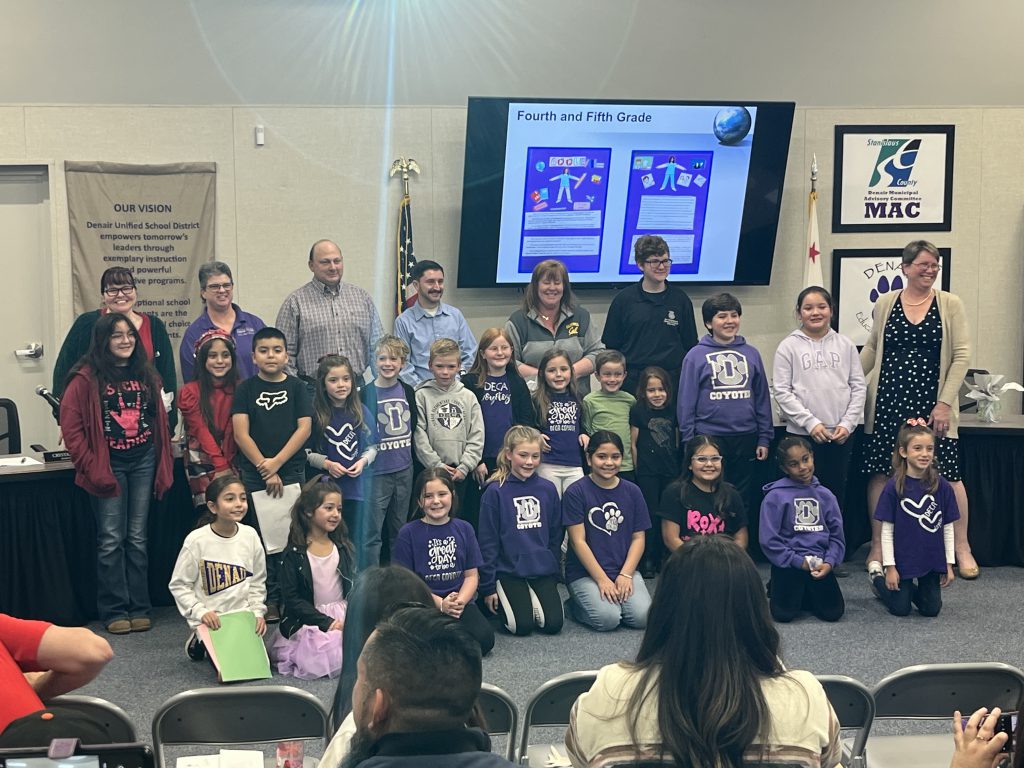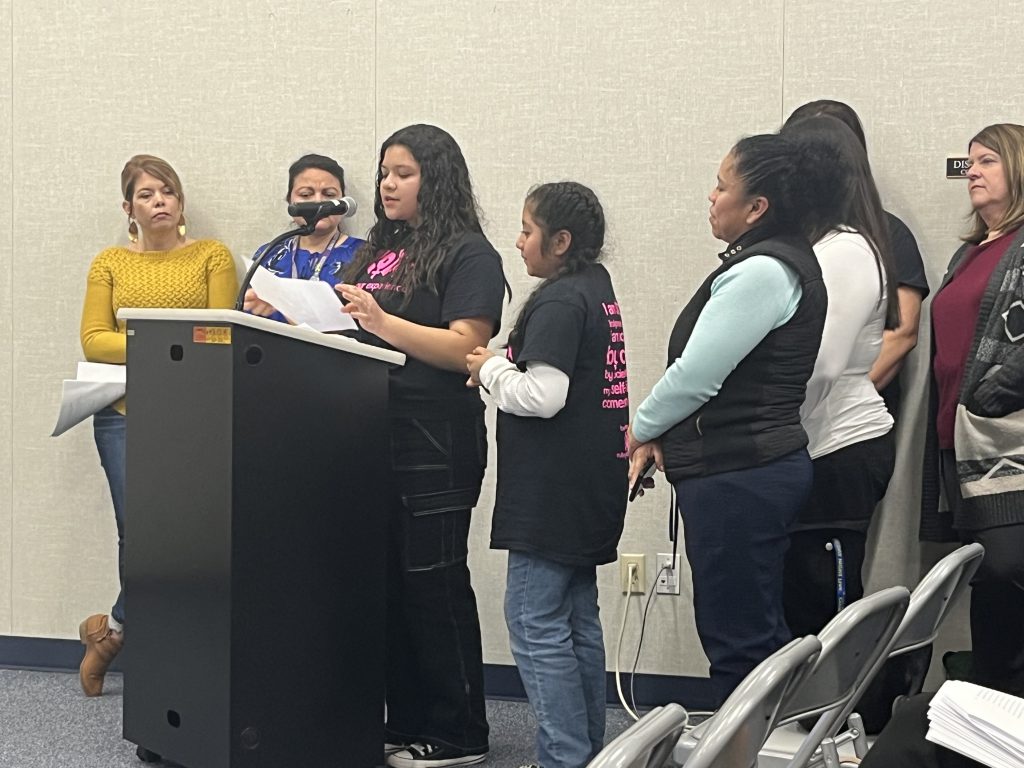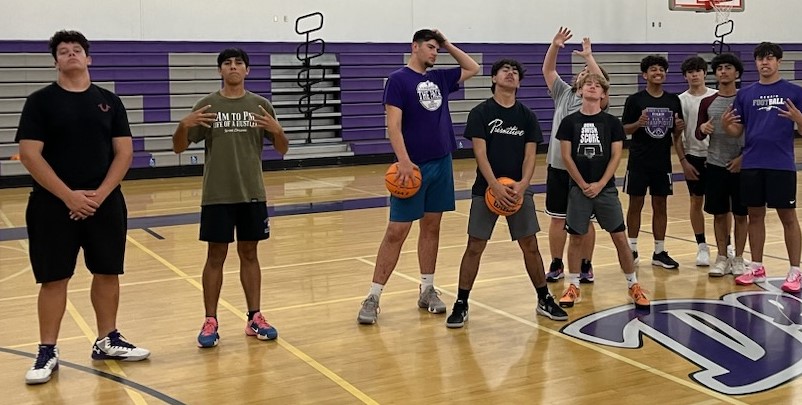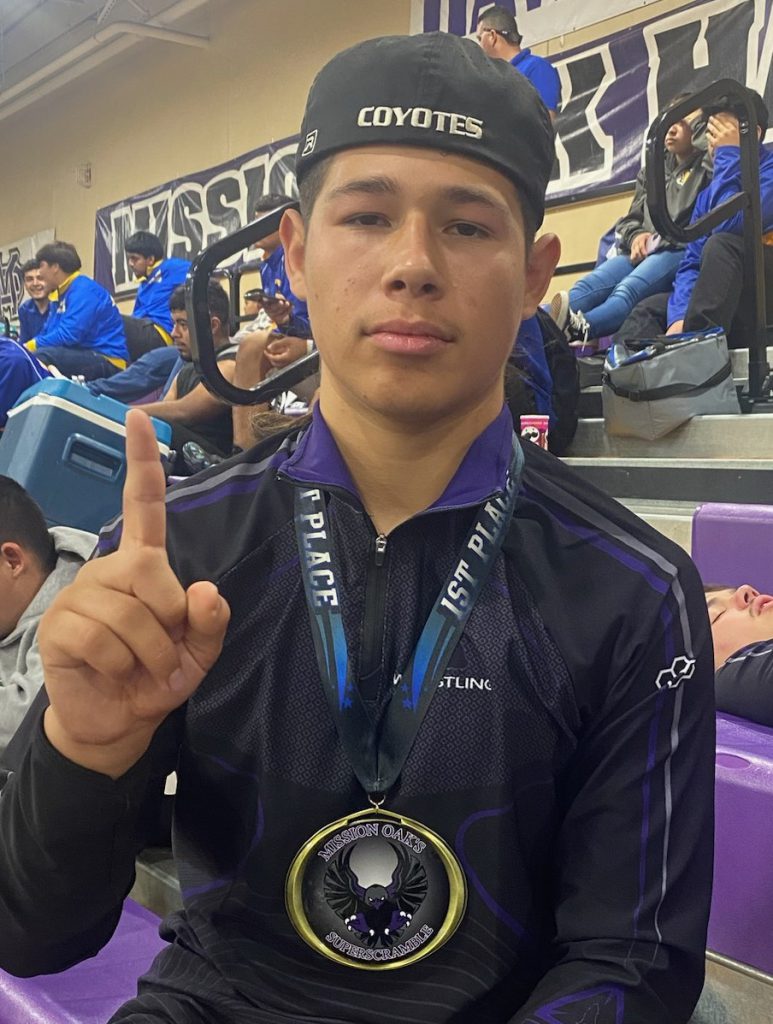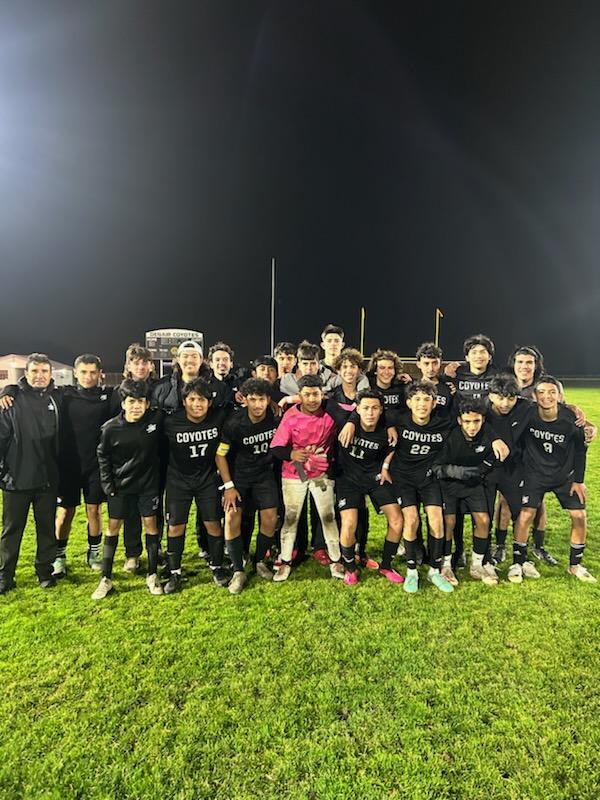
When it comes to expectations, the Denair High boys soccer team has set the bar very high. That’s what happens when you win back-to-back Sac-Joaquin Section Division VI championships and twice qualify for the NorCal playoffs. The Coyotes know their reputation precedes them in every match; that no opponent will take them lightly.
Coach Antonio Padilla wouldn’t have it any other way.
“That’s OK. That’s what pushes you in life,” Padilla said of the expectations for this year’s team. “That’s one of the messages I send to the players. We are a team and I believe 100% that if you work hard, it pays off. No one is going to give you anything.”
So far, so good this season for the Coyotes, who have relied once again on a quick-strike offense led by Padilla’s two sons and an aggressive defense featuring playoff-tested players. Denair is 12-5 overall and 3-1 in the Southern League, with its only league blemish a 3-1 road loss to Delhi on Dec. 15.
Denair and Delhi tied for the league title last year and clearly are the favorites again this season. The two rivals will meet for the final time at Denair on Jan. 19.
“They have some very strong players. They are a solid team, but we also made some mistakes,” Padilla said of Delhi and the schools’ first game.
The match against Delhi actually began a rare three-game losing streak for Denair that included non-league losses to two larger schools – 1-0 to Pitman and 3-2 to Turlock (on a last-second goal in a rainstorm). Padilla said those defeats provided a teachable moment for him.
“It was a good wake-up call,” he admitted. “It showed me things I had to adjust on defense. We needed to attack the ball more.”
The Coyotes rebounded Tuesday against Orestimba, scoring three times in the second half to break a 1-1 tie and get back on the winning track. Senior captain Diego Padilla scored the first two goals for Denair, his younger brother Goliath added another and Azael Gil found the net late to lead Denair.
The offensive output continued a trend for Denair, which has tallied an impressive 23 goals while giving up just four in four Southern League matches. Delhi, by comparison, has scored 13 times in its first matches.
The Padilla brothers have played enough together, their father said, to be able to anticipate where the other might be at any time.
“They can handle the ball really well, especially Goliath. He can give Diego perfect passes,” Padilla said.
Gil and senior Justin Hernadez provide more offensive firepower while senior Eddie Verdugo is a force in the middle of the field.
“He’s very aggressive. He makes opponents’ lives impossible,” Padilla said of Verdugo. “I always say, ‘When you control the middle, you control the game.’ ”
Denair’s aggressive nature also pays off on defense, where seniors Manual Renteria and Nico Zavala, along with sophomore Johnny Tehandon, consistently put up a solid wall in front of senior goalie Sergio Torres.
“Defense is one of the biggest strengths we have,” Padilla said. “We have very aggressive players who are beating the (opponent’s) strikers to the ball.”
Padilla is pleased with how his team has responded to the challenge he put before them after the three consecutive losses.
“Now it’s looking a lot better,” he said. “I can see my players not holding anything back. We train hard and we have fun.”
If they can keep it up, that attitude and effort is likely to earn Denair a chance to defend its Section title later this year.
